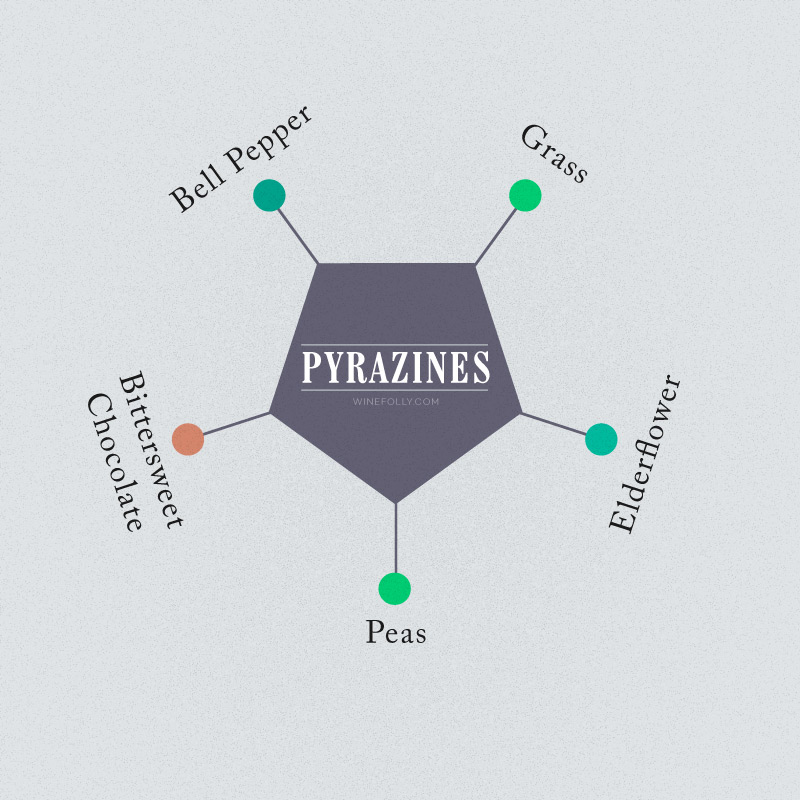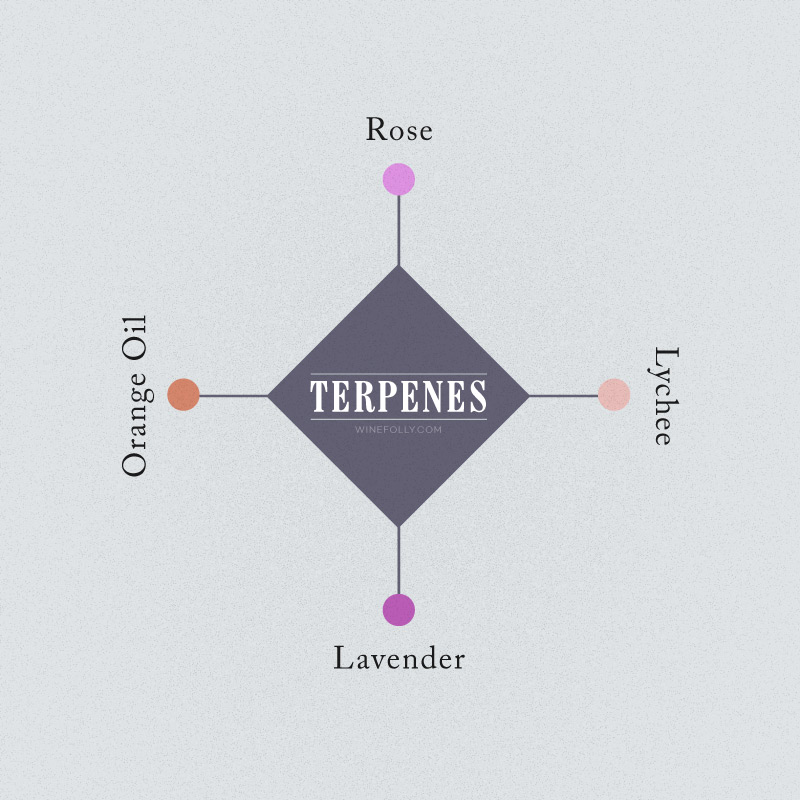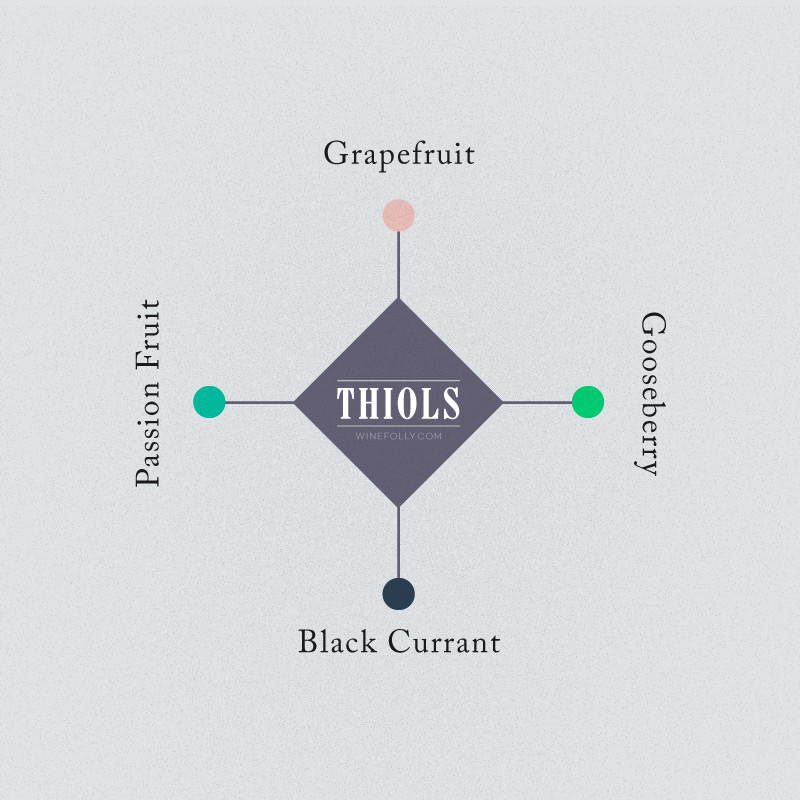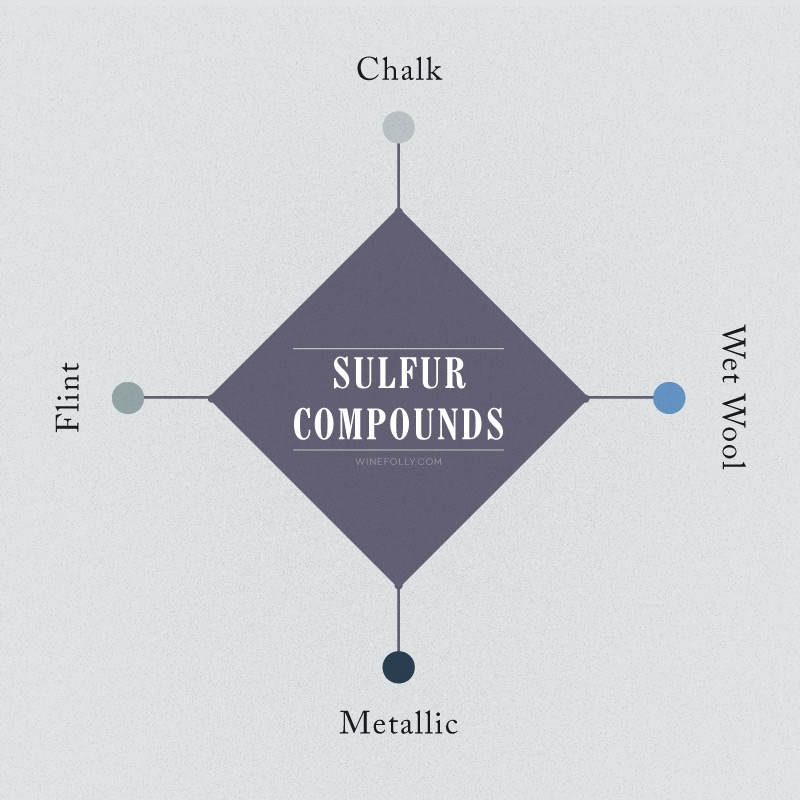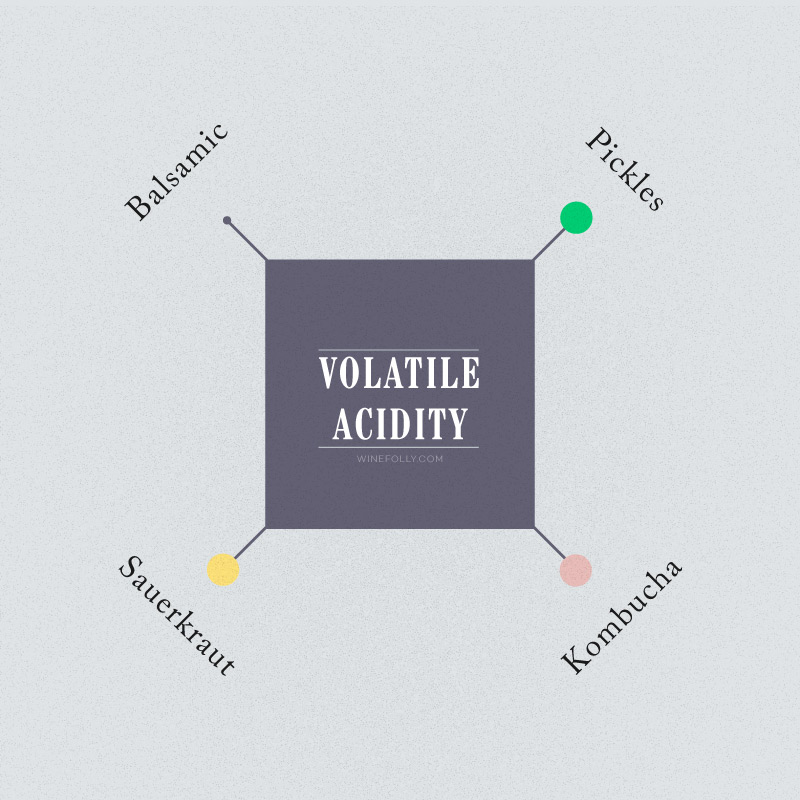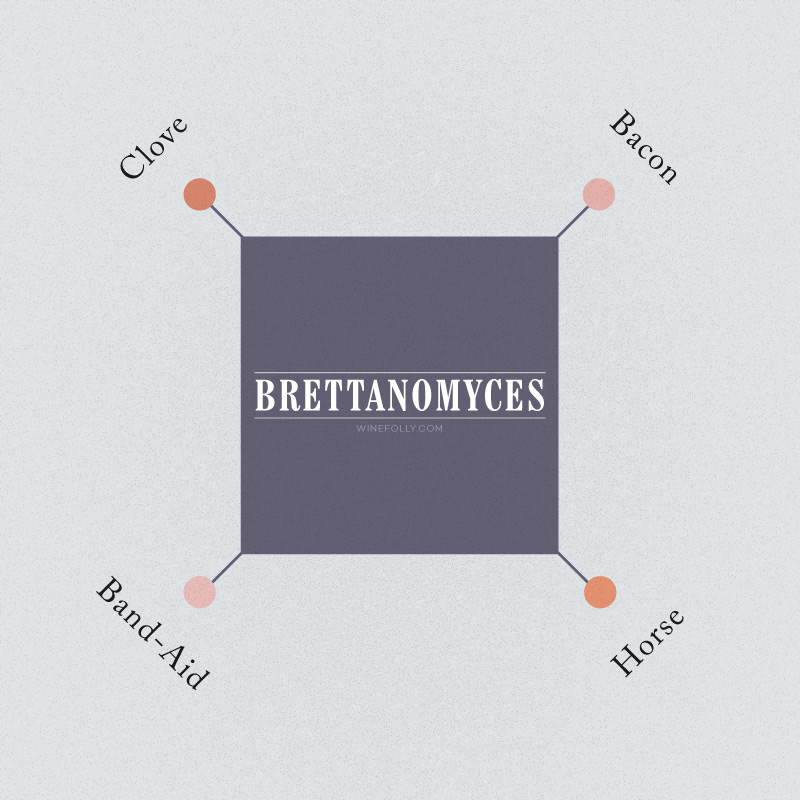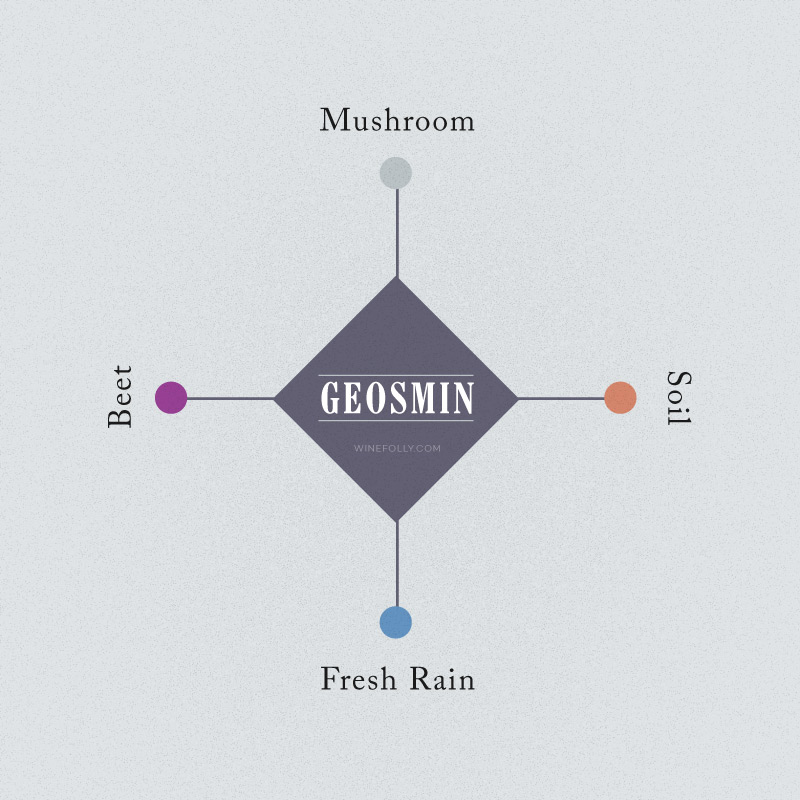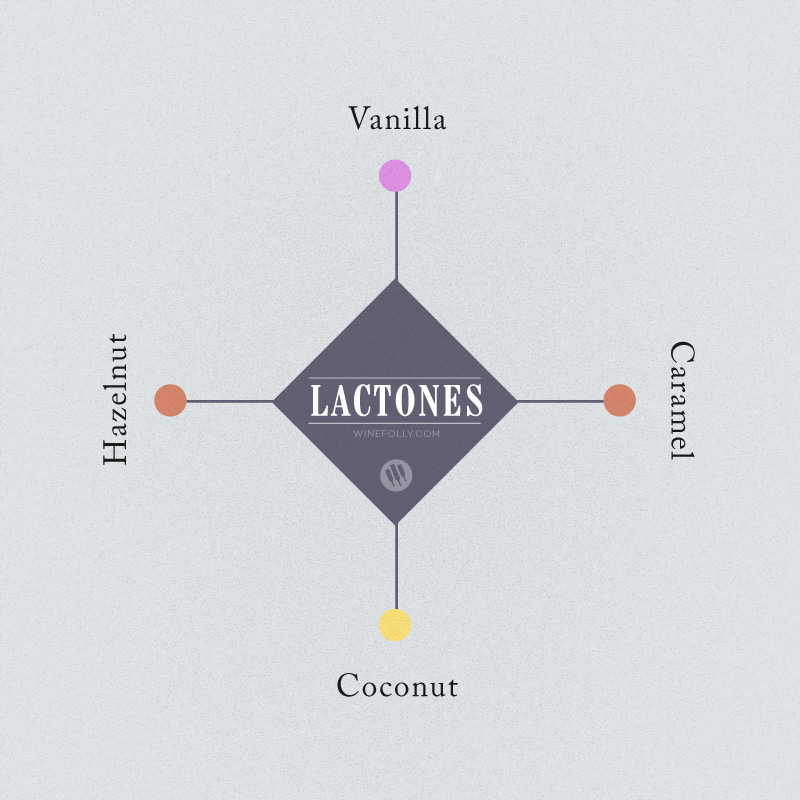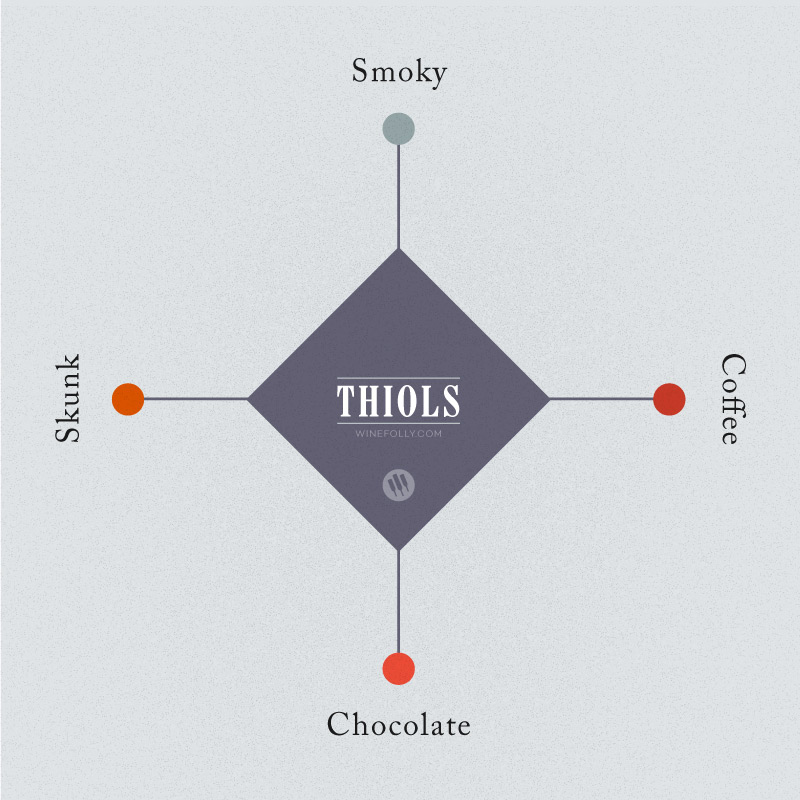Why does wine taste the way it does? If you love wine, you’ve no doubt read countless wine tasting descriptions like this one:
“blueberry aromas and accents of camphor, anise and the slightest floral hint…”
Wine Advocate 2010 Penfold’s “Grange” Shiraz
You might also be wondering: are winemakers blending blueberries into their wine? The answer is no. The secret lies in aroma compounds.
The Origin of Wine Flavor
From vanilla and apple to soil and chalk, wine flavors can be organized into 3 primary groups: Fruit/Floral/Herbal, Spice, and Earth.
Special thanks to Master Somms’ Geoff Kruth and Matt Stamp, who organized the aroma compounds in this guide. You can listen to their free podcast and learn how to apply this to blind tasting.
Fruit/Floral/Herbal Flavors
Esters: Fruit & Flowers
Wine esters come from acids. Esters are used extensively in the flavor industry for everything from essential oils to candy. In wine, esters provide the building blocks of fruit flavors.
- Apple:
- Chardonnay, etc
- Raspberry:
- Grenache, etc
Pyrazines: Herbaceous
Pyrazine is an aromatic organic compound
- Bell Pepper:
- Cabernet Franc & Carménère
- Grass:
- Sauvignon Blanc
Terpenes: Rose & Lavender
The smell of Christmas trees and desert sage are two classic examples of terpenes. In wine, they can smell anywhere from sweet and floral to resinous and herbaceous. By the way, terpenes are a highly desired trait of hops and beer making.
- Lychee:
- Gewürztraminer
- Rose:
- Muscat Blanc
- Lavender:
- Grenache & Côtes du Rhône
- Eucalyptus:
- Australian Shiraz
Thiols: Bittersweet Fruit
A thiol is an organosulfur compound that smells fruity in tiny amounts, but in larger amounts, it smells like garlic and is considered a wine fault. Thiols are also a building block of earthiness.
- Grapefruit:
- Vermentino, Sauvignon Blanc, Colombard
- Black Currant:
- Red Bordeaux and other Cabernet Sauvignon & Merlot
Earthy Flavors
Sulfur Compounds: Rocks
Sulfur compounds may be the secret to minerality in wine. Some sulfur compounds smell fantastic, such as the chalk-like aroma in fine Chablis. Some sulfur compounds are bad, like the smell of wet wool, which is a wine fault caused by UV damage.
- Chalk:
- Chablis & Champagne
- Metallic:
- Young, Freshly Opened Red Wine
Volatile Acidity: Balsamic & Pickle
Bacteria present in winemaking can cause volatile acidity (a.k.a. acetic acid.) In high doses, volatile acidity smells like acetone, but in low doses, it can add great complexity and is a feature of many very fine wines.
- Balsamic:
- Chianti & Amarone della Valpolicella
- Pickles:
- Red Burgundy
Brettanomyces: Clove & Bacon
Phenols are a group of chemical compounds that are similar to alcohols. Phenols are naturally occurring in many things, including sesame seeds, peppers, and even cannabis. In wine, one type of phenol is when a wild yeast called Brettanomyces can add either a lovely (clove and bacon) aroma or a very detestable (horse) aroma to wine.
- Clove:
- Châteauneuf-du-Pape & Côtes du Rhône
- Bacon:
- Paso Robles/Central Coast Syrah, Barossa Valley Shiraz
Geosmin: Earth & Mushroom
Geosmin is an organic compound from a type of bacteria. It might just be the most earthy-smelling compound out there. If you love beets, mushrooms, and the smell of potting soil, then Geosmin is your friend.
- Soil & Mushroom:
- Common in Old World Wines and some new world wines
Spicy Flavors
Rotundone: Peppercorn
Rotundone is a kind of terpene that is found in the essential oils of black pepper, marjoram, oregano, rosemary, thyme, and basil. It gives that classic peppery aroma that you’ve probably tasted on great red wines.
- Peppercorn:
- Syrah, Grüner Veltliner, & Cabernet Sauvignon
- Basil:
- Dry Riesling
- Pink Peppercorn:
- Viognier, Gewürztraminer
Lactones: Vanilla & Coconut
Lactones, and particularly gamma-Lactones are esters found in sweet and creamy smelling foods such as honey wheat bread, peaches, coconut, roasted hazelnut, butter, and even cooked pork!
- Vanilla & Coconut:
- Oak-aged red & white wine
- Hazelnut:
- Aged Sparkling Wine
Thiols: Smoke & Chocolate
Thiols can taste like grapefruit pith and passion fruit, but in higher doses will smell and taste like smoky, skunk, tar, and chocolate.
- Coffee:
- Sonoma Pinot Noir
- Chocolate:
- Argentine Malbec
Botrytis: Honey & Ginger
Botrytis Cinerea or ‘Noble Rot’ is a type of fungus that eats ripe fruits and vegetables. You’ve probably seen it before on a box of rotten strawberries! Despite its negative connotation with fresh fruits, it adds richness and a milieu of amazing aromas to dessert wines. There are a few compounds associated with Botrytis that you may have tasted:
- Sotolon: Honey, Fenugreek, Curry
- Furaneol: Caramel, Pineapple, Strawberry
- Phenylacetaldehyde: Rose, Cinnamon, Ginger
- Marmalade:
- Sauternes, Tokaji
- Ginger:
- Spätlese Riesling
Tasting Wine Smarter
Next time you taste wine, think about how the flavor may be one or a combination of the fundamental wine flavors above. If you’d like to know how to pick out flavors better, check out this useful guide on tasting wine.

